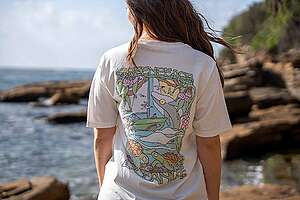Making sure our kids will grow up with a wonder of the world.
The Great Barrier Reef is one of the most beautiful places on earth. Its shallow seas and coral networks stretch 2,300km along Australia’s Pacific coast.
It’s home to 600 types of soft and hard corals, more than 100 species of jellyfish, 3000 varieties of molluscs,1625 types of fish, 133 varieties of sharks and rays, and more than 30 species of whales and dolphins – lots of which are endangered. It’s jaw-dropping, unbelievably precious, and under serious threat.
The Reef has been a natural wonder for thousands of years, home to Aboriginal first peoples and tens of thousands of tourism jobs. Our kids deserve to grow up in a world where they can still marvel at it.
The Reef is under unprecedented threat. The mining and burning of fossil fuels is warming our atmosphere, and our oceans. When ocean temperatures stay too warm for too long, corals expel the algae (zooxanthellae) living in their tissues, going completely white. This is coral bleaching. Corals can survive bleaching if the water temperatures drop quickly into a normal range, but if it stays too warm, they die.
Severe coral bleaching in the Australian summer of 2016, and again in 2017, killed at least 26% of the Reef’s corals, and likely nearly 50%. But despite this carnage on our doorstep, Australis is the world’s biggest coal exporter, and on track to be the world’s largest gas exporter. Our government even wants to build the Soutehrn Hemisphere’s largest coal mine on the edge of the GBR world heritage area.
But we can paint a different future. Climate modelling shows us that to keep reefs around the world in tact, we have to limit global temperature rise to 1.5C. That means we need a sharp slow-down of coal, gas and oil extraction, and a transition to 100% renewable energy – as soon as possible. Hundreds of thousands of people around the country are joining the movement for a coal-free future. Can we count you in?

